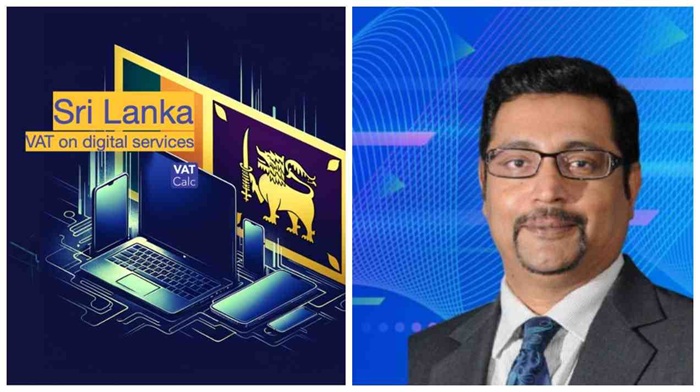
A central issue in the debate over the potential for the USA to top up 30% with an additional 18% on account of digital VAT to be introduced from October, is the widespread confusion between two fundamentally different forms of digital taxation: the Digital Value Added Tax (VAT) and the Digital Services Tax (DST).
Digital VAT: A standard consumption tax
Digital VAT is a consumption-based tax imposed on the end-user of digital services. For example, Sri Lanka’s 18% VAT on nonresident digital service providers who provide services via an electronic platform requires these companies to register locally and collect VAT from Sri Lankan consumers who purchase services such as streaming, online gaming, or cloud-based software etc.
This system mirrors the treatment of other goods and services consumed domestically, ensuring tax neutrality and fairness. It also aligns with the OECD’s VAT/GST guidelines, which recommend taxing consumption at the point of use known as the “destination principle.” has been widely adopted by countries around the world, including Australia, New Zealand, and EU member states.
Several countries in the region that apply VAT or GST to digital services have recently benefited from reduced US tariff rates under Trump’s reciprocal trade policy. For example, India, which imposes an 18% GST on most digital services, has been assigned a lower US tariff rate of 26%. Similarly, Vietnam, with a 5% VAT on digital services, now faces a reduced US tariff rate of 20%. Despite India’s earlier use of equalisation levies (India’s version of DST), its continued application of GST on digital services provided by foreign entities highlights that VAT remains a widely accepted and standard taxation method.
Digital Services Tax (DST): A revenue-based levy
Digital Services Taxes (DSTs) emerged as a way for countries to assert their right to tax the digital economy, especially in response to perceived tax avoidance by large tech firms like Google, Amazon, and Meta. These companies often shifted profits to low-tax jurisdictions, exploiting outdated tax rules based on physical presence. In the absence of a modern global tax framework, countries introduced DSTs to capture revenue from digital activities within their borders. However, these unilateral taxes sparked opposition from the US, which viewed them as discriminatory and retaliated with trade measures.
To resolve these tensions, the OECD proposed a two-pillar solution: Pillar One, which reallocates taxing rights based on user location, and Pillar Two, which sets a global minimum corporate tax rate of 15%. While DSTs are not part of the OECD’s framework and were meant as temporary measures, many countries adopted them due to delays in global implementation. In contrast, the OECD supports VAT systems for digital services, emphasizing principles like “neutrality” between domestic and foreign suppliers, taxation based on consumption location (destination principle), mandatory registration for non-resident providers, and efficient administration through digital filing and transparent audits.
DST targets the gross revenues of large multinational digital firms derived from specific services within a jurisdiction such as online advertising, social networking, or monetisation of user data etc. These taxes are designed to address concerns about profit shifting and the under-taxation of digital giants that operate extensively in a country without a physical presence. Unlike VAT, DSTs are not levied on consumers but directly on corporate revenues, making them more controversial in international trade discussions.
Sri Lanka’s policy: A clear case of VAT, not DST
It is important to emphasise that Sri Lanka’s 18% levy is a digital VAT, not a DST. This distinction is critical, as US trade investigations and retaliatory actions have been directed exclusively at DST regimes, which are perceived as discriminatory toward US-based tech companies. In contrast, countries that apply digital VATs in accordance with international norms have not faced similar scrutiny or sanctions from the United States. It is significant to note that currently, over 100 countries are levying VAT on cross-border Digital Services.
Suresh R I Perera is a distinguished Attorney-at-Law and Tax Principal at KPMG, with an extensive multidisciplinary background spanning taxation, law, accounting, and corporate governance
